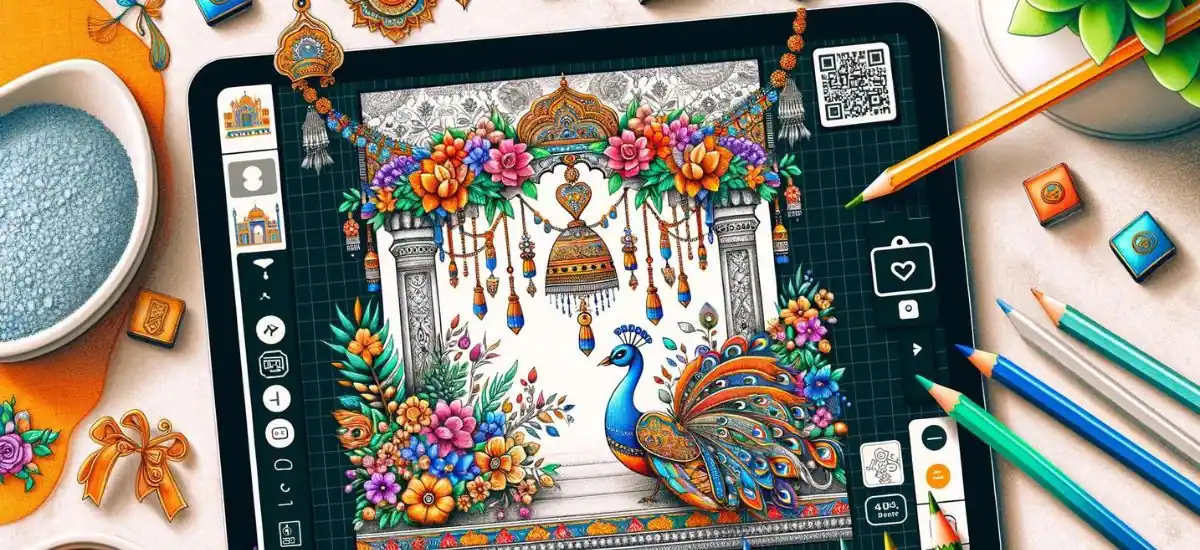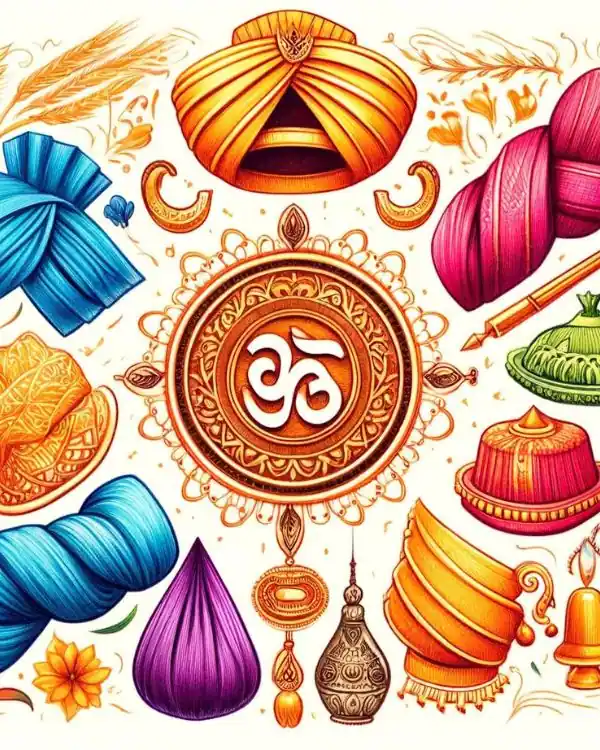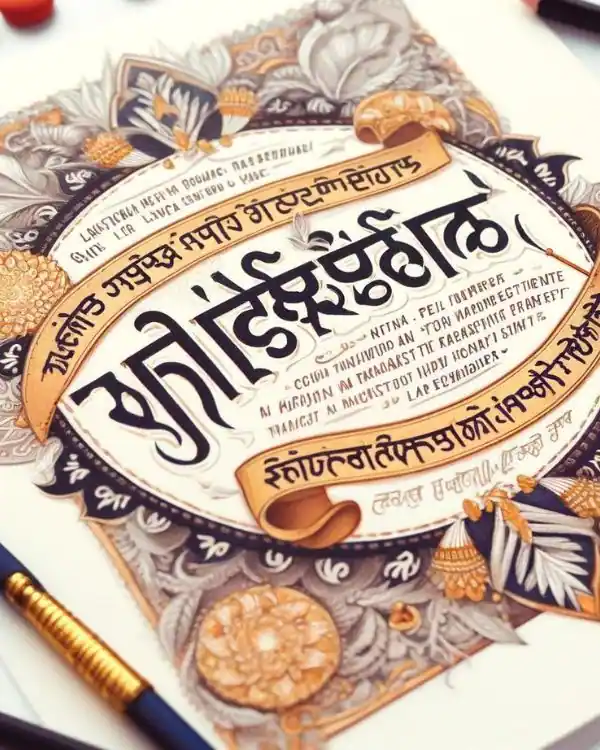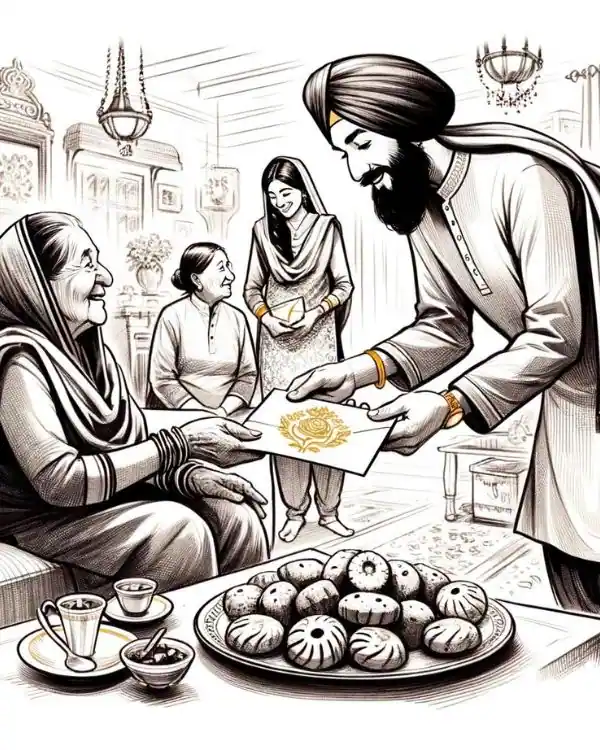Advertisement
By IS Team
Top Trends And Timeless Designs For Your Punjabi Wedding Card

Advertisement
A Punjabi wedding card is not just an invitation, but a rich tapestry woven with cultural symbols, vibrant colors, and heartfelt messages. It invites guests to partake in the joyous union of two souls, infused with traditional motifs like the Ek Onkar, peacocks, and floral patterns, each symbolizing elements of life and beauty.
The dual-language script bridges ancient tradition with contemporary reach, ensuring every guest feels connected. Modern touches like digital QR codes and eco-friendly materials reflect today’s global, environmentally conscious spirit. Each card is a heartfelt summons to a celebration filled with love, culture, and communal joy, promising an unforgettable gathering of friends and family.
Traditional Elements of Punjabi Wedding Cards

Symbolism: Echoes of Tradition 🕉️
Punjabi wedding cards are adorned with symbols that are deeply rooted in the culture's rich heritage, each carrying significant meaning:
- Ek Onkar: This sacred symbol represents the universal truth of one God and is often the focal point of the card, blessing the union with divine presence.
- Kalgi: Historically worn by Punjabi grooms on their turbans, this emblem symbolizes royalty and valor. It’s frequently depicted in the design to honor the groom as a prince on his wedding day.
- Doli: Representing the bride's departure from her parental home to her husband's, this symbol is a poignant reminder of new beginnings and cherished memories.
- Khanda: This is another powerful symbol, particularly for Sikh Punjabis, representing the double-edged sword flanked by two daggers, denoting courage and protection.
- Phulkari Patterns: Often used as a decorative theme, this traditional embroidery from Punjab symbolizes craftsmanship and the beauty of rural life.
Color Palette: A Vibrant Spectrum 🎨
The colors chosen for a Punjabi wedding card are not just a feast for the eyes but also hold deep meanings:
- Red: Quintessentially the color of love and passion, red is almost omnipresent in Punjabi weddings, symbolizing both beauty and strength in the union.
- Gold: This opulent hue stands for prosperity and grandeur, used liberally to give a luxurious feel to the wedding card.
- White: Symbol of purity and peace, it often serves as a backdrop that enhances the vibrancy of other colors.
- Saffron: A color of wisdom and courage, saffron brings a spiritual and valorous quality to the wedding invitation.
- Green: This color is frequently used to symbolize fertility and a new beginning in the life of the couple.
Motifs and Patterns: A Tapestry of Art 🌼
The motifs and patterns on a Punjabi wedding card are a celebration of life and joy:
- Peacocks: These majestic birds are a symbol of beauty and grace. Their depiction in Punjabi wedding cards is a nod to the dance of love and the beauty of life.
- Paisleys: Shaped like a teardrop or a mango, the paisley is a common motif that represents the essence of life and the eternity of love.
- Floral Designs: Flowers are a universal symbol of blossoming love and happiness. From delicate roses to bold marigolds, floral patterns are intricately woven into the design of the card.
- Baraat Procession: Illustrations of the Baraat procession signify the joyous journey of the groom and his family to the wedding venue, filled with music and dancing.
- Mandala Designs: These intricate patterns are not only visually captivating but also symbolize the universe and the eternal cycle of life.
By incorporating these traditional elements, a Punjabi wedding card becomes a vibrant herald of the forthcoming nuptials, imbued with cultural significance and heartfelt wishes for the couple’s future. Each symbol, color, and pattern interweaves a story of heritage, celebration, and the joyful union of two souls.
Language and Wording: Crafting the Voice of Celebration

Use of Language: Bridging Traditions and Modernity 📜
In a Punjabi wedding card, the integration of Punjabi script alongside English or other languages is crucial. This inclusion not only honors the linguistic roots of the family but also ensures that the card is accessible to guests from diverse backgrounds. The dual-language approach reflects a respect for tradition while embracing the global spread of Punjabi communities. It invites every reader, whether they are from Punjab or the Punjab-at-heart scattered across the globe, to feel intimately connected to the celebration.
Formal Invitations: Echoes of Elegance and Emotion ✉️
The wording in a Punjabi wedding invitation is a lyrical blend of formality and poetry. Common phrases such as "Ji Aayan Nu" (welcome) and "Saadi Khushi Wich Tuhada Intzaar Hai" (we await your presence in our happiness) set a respectful and inviting tone. Here are a few examples of poetic lines that resonate with the emotional depth and cultural richness of Punjabi traditions:
- "Aapji de aashirwad naal, sanjog jud jaange do dil" (With your blessings, two hearts will be united by fate).
- "Pavan pavitar rishta pyaar da, aao mil beth sajayein eh mehfil" (A sacred bond of love, come let us together adorn this gathering).
- "Nanak Naam Chardi Kala, Tere Bhane Sarbat Da Bhala" (With the Grace of the Almighty, may everyone prosper), often used in Sikh invitations to invoke blessings.
Personal Touches: Messages from the Heart 🌿
Personalized messages in a Punjabi wedding card reflect the unique essence of the family's traditions and values. Tailoring a message to mention specific family anecdotes or shared memories can deeply touch the hearts of the recipients. For example, mentioning how the couple first met at a family gathering during Baisakhi or a special memory shared at a family member's wedding adds a personal narrative that celebrates both individual love and collective joy.
Examples of Wording for Different Ceremonies
Each ceremony during a Punjabi wedding has its own charm, and the invitation wording should reflect the spirit of each event:
- Mehndi: "Mehndi ki khushboo se saj rahe hain haath, dekho aaj ki raat, aao saath!" (With hands adorned with the fragrance of Mehndi, behold this night, come join us!)
- Sangeet: "Sangeet ki raat aayi hai, naach gaana aur pyaar bhari baatein, aapke bina adhoori hai." (The night of music has arrived, dancing, singing, and loving conversations await, incomplete without you.)
- Anand Karaj: "Guru ki hazoori mein, Anand Karaj di pavittar rasam ch, aap ji da swagat hai." (In the presence of the Guru, you are cordially invited to the sacred ceremony of Anand Karaj).
These tailored phrases not only invite guests but also immerse them in the joy and sanctity of each event, making the invitation a cherished prelude to the celebrations to come.
Modern Innovations in Punjabi Wedding Cards: Blending Tradition with Technology

Digital Invitations: Tech-Savvy Touches 📲
The digital wave has not spared the realm of wedding invitations. Modern Punjabi wedding cards often feature QR codes that lead guests to a digital hub for all wedding-related information—from venue directions to accommodation details or even a personalized welcome message from the couple.
This innovation not only enhances convenience but also significantly reduces paper use, aligning with eco-friendly goals. Digital invitations are particularly popular among young couples and diaspora communities, streamlining communication across global geographies with a simple scan.
Custom Illustrations: Personal Stories on Paper 🎨
Custom illustrations have become a hallmark of personalized wedding cards. These are not just invitations but narratives captured in art—whether they depict the place where the couple first met, landmarks of their hometowns, or scenes from their proposal story.
This approach transforms each invitation into a unique piece of art, cherished by guests and treasured as a keepsake. Custom illustrations can also include cultural elements like a vibrant Bhangra dance scene, a serene landscape of Punjab, or iconic symbols like the Golden Temple, making every card deeply personal and visually captivating.
Through these modern innovations, Punjabi wedding cards are becoming a perfect blend of cultural heritage and contemporary elegance. By incorporating sustainable practices, digital solutions, and personalized art, these invitations not only announce a wedding—they celebrate a couple's values, creativity, and love story, setting the stage for a memorable beginning.
Essential Components of the Punjabi Wedding Card: Crafting a Complete Invitation
Main Invitation: The Heart of the Celebration 💖
The Main Invitation is the core of the Punjabi wedding card, elegantly designed to convey all the essential details with grace and clarity. It typically includes:
- The Names of the Hosts and the Couple: Often starting with the names of the elders or parents, followed by the couple’s names, symbolizing blessings and familial ties.
- Event Details: Precise information about the date, time, and venue of the main wedding ceremony. This section is crafted to guide guests seamlessly to the celebration.
- Ceremonial Highlights: A brief mention of key rituals, like the Anand Karaj or Phere, that guests will witness, inviting them to partake in these sacred moments.
The presentation of this information combines elegant fonts with traditional motifs, ensuring that every word not only informs but also delights.
Add-ons: Extending the Invitation 💌
To fully immerse guests in the wedding festivities, additional cards, or add-ons, are provided for other significant events surrounding the wedding. These include:
- Mehendi Card: Invites guests to the colorful and musical event of Mehendi, often held a day or two before the wedding. It's usually vibrant, reflecting the festive and informal nature of the gathering.
- Sangeet Card: Calls for participation in the Sangeet, a night filled with dance and songs, celebrating the union. This card can be playful, incorporating musical notes or dance motifs.
- Reception Card: Details about the reception, where the celebration continues with dinner, dance, and joyous interactions. This card might have a more formal or sophisticated design, matching the tone of the event.
Each of these cards is designed to not only provide information but also to build anticipation and excitement for the celebrations to come.
RSVP: Streamlining Guest Management 📩
The RSVP card is a crucial component for managing the logistics of the wedding efficiently. It usually includes:
- A Request for Confirmation: Guests are asked to confirm their attendance, which helps in finalizing the headcount for venue and catering arrangements.
- Contact Information: Provides a phone number, email, or a link to a wedding website where guests can confirm their presence.
- Modern Alternatives: Many modern invitations include a QR code that leads directly to a digital RSVP platform, simplifying the process for both guests and hosts. This approach is not only convenient but also aligns with eco-friendly practices by reducing the need for additional paper usage.
RSVP cards are often styled in a manner that complements the main invitation, maintaining a cohesive look across all components of the wedding stationery.
By meticulously crafting each component of the Punjabi wedding card, from the main invitation to the RSVP, families ensure a smooth and enjoyable experience for their guests, setting the stage for a memorable celebration of love and community.
Etiquette and Tips for Distributing Punjabi Wedding Cards

Timing: Perfecting the Prelude to the Party ⏳
When it comes to sending out Punjabi wedding cards, timing is everything. Adhering to these guidelines not only shows respect for your guests but also ensures smooth planning:
- Advance Notice: Ideally, wedding cards should be sent 6 to 8 weeks before the wedding date. This allows guests ample time to clear their schedules, make travel arrangements, and prepare for any cultural rituals they might be involved in.
- Save the Date: For guests who will be traveling from afar or for destination weddings, consider sending a 'save the date' notice even earlier, about 3 to 6 months in advance. This preliminary notice can be followed by the official invitation with all the details.
The timing reflects thoughtful consideration, giving each guest the feeling of being valued and eagerly awaited at the celebration.
Personal Delivery: The Warmth of Personal Touch 🤲
In Punjabi culture, the act of personally delivering wedding cards is imbued with deep significance:
- Honoring Relationships: Personal delivery is not just a practice but a celebration of close relationships. Handing the invitation personally to family and friends is seen as a sign of respect and affection, reinforcing community and familial bonds.
- Special Touch for Elders: Special emphasis is placed on personally delivering cards to the elders of the family. This gesture is a mark of reverence and seeks blessings for the upcoming nuptials.
- Accompanied by Sweets or Gifts: Often, the cards are accompanied by a small gift, such as sweets or a token of prosperity (like a small bag of nuts or dried fruits), which symbolizes good wishes and joy being shared.
This tradition of personal delivery not only strengthens connections but also adds a memorable touch to the invitation process, making it more than just an exchange of details but a heartfelt invitation to join in one of life’s most joyous celebrations.
By observing these etiquette tips, families ensure that the distribution of Punjabi wedding cards is as much a part of the wedding celebration as the events themselves. It’s about paving the way for a joyful gathering, filled with love, respect, and communal harmony.
Frequently Asked Questions
FAQ 1: How can I choose the right font for my Punjabi wedding card?
Choose fonts that balance readability with elegance. Traditional fonts like Gurmukhi for Punjabi and stylish script or serif fonts for English are popular choices that reflect both heritage and modern aesthetics.
FAQ 2: What are some thoughtful ways to handle invitation for guests who cannot attend?
Consider sending a special version of the invitation with a personal note or a link to a live stream of the ceremony, allowing them to partake in the joy and blessings remotely.
FAQ 3: How can the design of a Punjabi wedding card be made more inclusive for multicultural guests?
Incorporate multilingual descriptions and ensure the card includes translations or transliterations. This gesture helps all guests appreciate the nuances of Punjabi traditions and the significance of the wedding rituals.
FAQ 4: Are there any specific trends in Punjabi wedding cards for 2024?
Trends for 2024 are leaning towards minimalist designs with bold typographic elements and a focus on high-quality materials. Digital integrations like augmented reality for virtual venue tours are also gaining popularity.
Advertisement
I'm Looking For!








